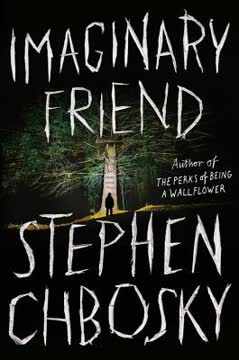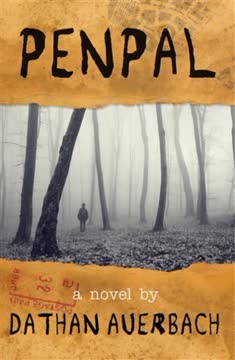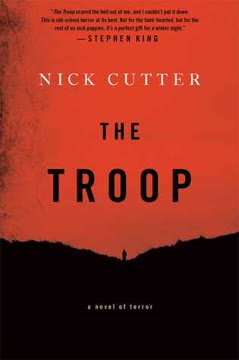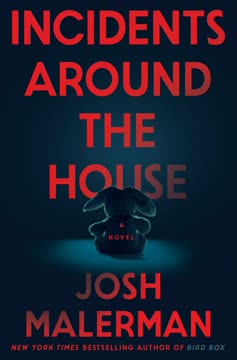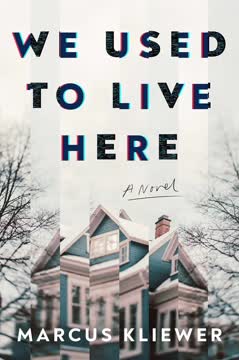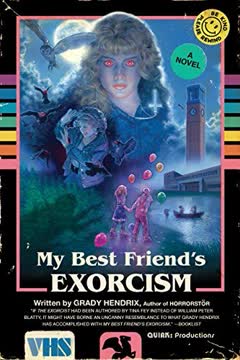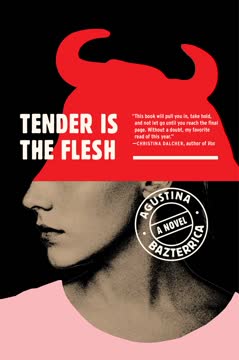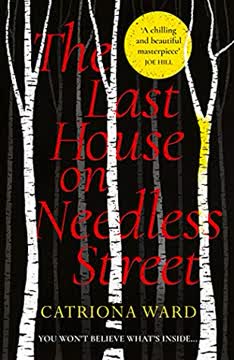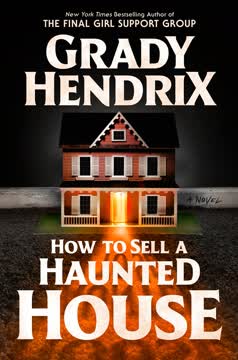Plot Summary
Fleeing Into the Woods
Kate Reese, a fiercely protective single mother, flees an abusive relationship with her young son, Christopher, seeking refuge in the small, seemingly idyllic town of Mill Grove, Pennsylvania. Their arrival is marked by hope for a fresh start, but also by a sense of unease. The town is surrounded by the mysterious Mission Street Woods, a place with a dark history and whispered legends. As Kate struggles to find stability and safety for her son, the woods loom as both a physical and psychological boundary, hinting at dangers that are more than just the memories they're trying to escape.
The New Beginning
Kate and Christopher begin to build a new life. Kate finds work at a local retirement home, and Christopher starts at Mill Grove Elementary, where he befriends a group of misfit kids. Despite the town's outward normalcy, both mother and son sense they are being watched. Christopher, sensitive and struggling with learning difficulties, is drawn to the woods, especially after seeing a strange, smiling face in the clouds. The woods become a place of fascination and fear, a symbol of the unknown that both beckons and threatens.
The Cloud with a Face
Christopher's encounters with the cloud face intensify, and he begins to experience strange phenomena—rain that starts and stops at his command, a sense of being communicated with by something beyond. He forms a close bond with Eddie ("Special Ed"), and together with other outcasts, they find solace in each other. The cloud face becomes Christopher's "imaginary friend," a presence that seems to offer comfort and guidance, but also leads him deeper into the woods and into the heart of the town's secrets.
The Disappearance
One rainy afternoon, Christopher follows the cloud face into the Mission Street Woods and disappears for six days. The town is thrown into panic, and Kate is consumed by terror and guilt. The search is fruitless, and the woods seem to swallow all clues. When Christopher finally reappears, he has no memory of what happened, but he is changed—smarter, more confident, and haunted by headaches and strange abilities. The town breathes a sigh of relief, but the sense of unease only deepens.
The Return and the Change
Christopher's miraculous return is celebrated, but his transformation is unsettling. He excels at school, his dyslexia vanishes, and he displays uncanny knowledge and healing abilities. Yet, he is plagued by fevers, nosebleeds, and nightmares. Kate, desperate for answers, is torn between relief and fear for her son's sanity. The town, meanwhile, is gripped by a mysterious flu epidemic and a rise in violence and madness. The woods, and whatever lies within, seem to be infecting everyone.
The Tree House Pact
Christopher and his friends, inspired by visions and a sense of urgency, build a tree house deep in the woods. The tree house becomes a sanctuary and a portal, a place where the boundaries between reality and the imaginary world blur. The boys' bond is tested as they face bullies, family troubles, and the growing darkness in the town. The tree house is both a symbol of childhood hope and a battleground for the soul of Mill Grove.
The Six Days Lost
As Christopher's powers grow, he begins to piece together what happened during his six days in the woods. He learns of David Olson, a boy who vanished fifty years earlier under similar circumstances, and discovers that the woods are a gateway to a nightmarish "imaginary world" ruled by the Nice Man and the Hissing Lady. The imaginary world is a twisted mirror of the real one, filled with lost souls, monsters, and the echoes of the town's sins. Christopher realizes he is being groomed for a purpose, and that the fate of everyone he loves depends on what he does next.
The Nice Man's Secret
The Nice Man, once a comforting presence, is revealed as a manipulative, ancient evil—possibly the Devil himself—trapped in the imaginary world and seeking escape. He needs Christopher's power, unlocked by the tree house, to break free. The Hissing Lady, once feared, is actually a guardian, keeping the Devil imprisoned at great personal cost. Christopher is caught in a cosmic battle, forced to choose between sacrificing his mother or unleashing the Devil on the world.
The Hissing Lady's Game
The Nice Man's influence spreads like a virus. The townspeople, driven mad by their own fears and desires, become his army, hunting Christopher and his allies. The Hissing Lady, revealed to be Eve—God's daughter and the original guardian—fights to protect Christopher and the world. The boundaries between the real and imaginary worlds collapse, and Hell threatens to break loose. The children's tree houses, built over centuries, are revealed as portals and prisons, linking generations of lost souls.
The Town Unravels
As Christmas approaches, the town descends into chaos. Violence, madness, and supernatural phenomena sweep through Mill Grove. The "flu" is revealed as the Devil's influence, and the only way to stop it is to keep him imprisoned. Christopher, his mother, the sheriff, and Ambrose (David Olson's brother) race against time to decipher clues left by David and to save the town from eternal damnation.
The Imaginary World Revealed
Christopher enters the heart of the imaginary world, confronting the Nice Man and the Hissing Lady. He learns that the power of the tree house is not omnipotence, but love and self-sacrifice. The Devil's greatest trick is convincing people to choose violence and hate over forgiveness and compassion. The only way to win is to let go of fear, forgive, and set the lost souls free.
The Devil's Bargain
The Nice Man offers Christopher a terrible bargain: kill the Hissing Lady (Eve) and save his mother, or refuse and doom her to eternal torment. Christopher, understanding the true nature of love and power, refuses to kill. Instead, he forgives the Devil, breaks the cycle of violence, and sets the souls free. The Hissing Lady ascends, the Devil is left alone in his prison, and the world is saved from Hell on Earth.
The Power of Forgiveness
Christopher's act of forgiveness ripples through the imaginary and real worlds. The townspeople are freed from their madness, the flu lifts, and the lost children are released. The mailbox people—souls trapped by their own guilt and pain—are set free. The town begins to heal, and the survivors are left to rebuild, changed by what they have endured.
The Final Battle
The Nice Man, enraged and desperate, tries to escape through the tree house, but is trapped by Christopher and his mother. They burn the tree house, sealing the Devil in his prison. The Hissing Lady (Eve) is welcomed home by her Father, and the Devil is left alone, powerless, and forgotten.
The Door Opens
Christopher, his mother, the sheriff, and Ambrose return to the real world. The town is battered but alive. The survivors are reunited with their loved ones, and the wounds—physical and emotional—begin to heal. The supernatural fades, but the lessons remain. The power of love, forgiveness, and sacrifice is affirmed.
The Aftermath
The town recovers from its ordeal. Families are reunited, old wounds are mended, and the future is uncertain but hopeful. Christopher and his mother, forever changed, find peace and the promise of a new life. The sheriff and Kate find love. The children are safe, and the darkness is banished—for now.
The World Set Free
The Devil remains imprisoned, but his presence lingers as a warning. The world is free, but only as long as people remember the lessons of compassion, humility, and forgiveness. The story ends with a sense of vigilance and hope, as the survivors look to the future, knowing that the battle between good and evil is never truly over.
Characters
Christopher Reese
Christopher is a sensitive, dyslexic boy whose life is shaped by trauma, love, and supernatural forces. After his disappearance in the woods, he returns changed—smarter, more powerful, and haunted by visions and abilities. He is the story's heart: a child forced to confront cosmic evil and make impossible choices. His journey is one of self-discovery, sacrifice, and the realization that true power lies in love and forgiveness, not violence or omniscience. His relationship with his mother is the emotional core, and his compassion is what ultimately saves the world.
Kate Reese
Kate is a survivor of abuse, fiercely protective of her son. Her love is both shield and sword, driving her to extraordinary lengths to keep Christopher safe. She is haunted by her past but refuses to let it define her or her child. Kate's journey is one of empowerment—learning to trust, to fight, and ultimately to let go. Her willingness to sacrifice herself for Christopher, and her ability to forgive, are what enable the final victory over evil.
The Nice Man (The Devil)
The Nice Man is the story's true antagonist: a supernatural being, possibly the Devil, trapped in the imaginary world. He appears as a comforting imaginary friend but is revealed as a master manipulator, using children's innocence and pain to try to escape his prison. He feeds on fear, violence, and despair, and his greatest weapon is convincing people to harm each other. He is both seductive and monstrous, embodying the seductive nature of evil and the dangers of unchecked power.
The Hissing Lady (Eve)
Initially feared as a monster, the Hissing Lady is revealed to be Eve, God's daughter and the original guardian of the world. She has kept the Devil imprisoned for millennia, enduring endless torment to protect humanity. Her role is that of the suffering mother, the misunderstood protector, and the ultimate symbol of self-sacrifice. Her relationship with Christopher and David Olson is maternal, and her willingness to endure pain for others is the key to the world's salvation.
Ambrose Olson
Ambrose is the brother of David Olson, the boy who vanished fifty years earlier. He is a veteran, a widower, and a man burdened by guilt and grief. His quest to solve his brother's disappearance is both literal and symbolic—a search for meaning, forgiveness, and peace. Ambrose's journey parallels Kate's: both are parents (or parent-figures) who must confront the past to save the future. His reunion with David is one of the story's most poignant moments.
David Olson
David is the original "missing boy," whose fate is the key to the mystery. Like Christopher, he was chosen and transformed by the supernatural forces in the woods. His sacrifice—burying himself alive to keep the Devil imprisoned—sets the pattern for Christopher's own journey. David is both a victim and a hero, a child who endures unimaginable suffering to save others. His spirit guides and aids Christopher, and his story is a warning and an inspiration.
Special Ed (Eddie Anderson)
Eddie is Christopher's best friend, a boy with learning difficulties and a big heart. He provides comic relief and emotional support, but also shows courage and loyalty in the face of danger. Eddie's journey is one of self-acceptance and growth, and his friendship with Christopher is a source of strength for both boys.
Brady Collins
Brady is initially a bully and antagonist, shaped by his privileged but toxic family. As the town descends into madness, he becomes both a perpetrator and a victim, manipulated by the Nice Man and haunted by his own pain. His story is a cautionary tale about the cycle of abuse and the dangers of unchecked anger.
Jenny Hertzog
Jenny is another of Christopher's classmates, marked by trauma and cruelty. She is both a tormentor and a victim, her actions shaped by her own suffering. Like many characters, she is manipulated by the Nice Man but ultimately finds a measure of redemption and healing.
The Sheriff (Bobby Thompson)
The sheriff is a former city cop seeking peace in Mill Grove, only to be drawn into the town's nightmare. He is haunted by his own failures and the memory of a child he could not save. His relationship with Kate is one of mutual respect and growing love. The sheriff's journey is about facing the darkness within and without, and his willingness to sacrifice himself for others is a key part of the story's resolution.
Plot Devices
Dual Worlds (Real and Imaginary)
The novel's central device is the existence of a parallel "imaginary world" that mirrors and distorts the real one. The woods are the gateway, and the tree house is the portal. This device allows for a blending of psychological horror, supernatural fantasy, and allegory. The imaginary world is both a literal place and a metaphor for trauma, fear, and the battle between good and evil within every person. The shifting between worlds creates suspense, ambiguity, and a sense of cosmic stakes.
The Tree House as Portal
The tree house, built by Christopher and his friends, is both a symbol of innocence and a tool of supernatural power. It is the means by which the Nice Man seeks to escape, and the place where the final battle is fought. The tree house's construction, destruction, and burning are key plot points, representing the loss of innocence, the forging of identity, and the power of self-sacrifice.
The Power of Imagination and Belief
Christopher's abilities are unlocked by his imagination, and the imaginary world is shaped by the thoughts and fears of those who enter it. The story explores the dangers and wonders of belief—how it can be manipulated by evil, but also how it can be harnessed for good. The ultimate message is that love, forgiveness, and humility are more powerful than fear, violence, or omniscience.
Cycles of Trauma and Redemption
The novel uses the stories of multiple families—Reese, Olson, Collins, and others—to explore how trauma, abuse, and guilt are passed down and how they can be broken. The supernatural horror is a metaphor for real-world suffering, and the resolution comes not from defeating evil with violence, but from breaking the cycle through compassion and forgiveness.
Foreshadowing and Symbolism
Recurring images—clouds with faces, blood, strings, and names—are used to foreshadow events and reveal deeper truths. The cloud face is both a guide and a warning. The blood is both literal and symbolic, representing pain, sacrifice, and the world's suffering. The power of names—knowing and speaking them—reflects the importance of identity, memory, and connection.
Narrative Structure and Perspective
The story is told through multiple perspectives—Christopher, Kate, the sheriff, Ambrose, and others—allowing for a rich exploration of character and theme. The shifting realities and unreliable perceptions create suspense and challenge the reader to question what is real, what is imagined, and what is true.
Analysis
is a sprawling, ambitious horror-fantasy that uses the framework of a supernatural thriller to explore deep questions of trauma, faith, love, and the nature of evil. At its core, the novel is about the power of compassion and forgiveness to break cycles of violence and suffering. The imaginary world is both a literal battleground and a metaphor for the psychological and generational wounds that haunt individuals and communities. The story warns of the seductive nature of evil—not as an external force, but as something that manipulates our fears, resentments, and desires. The ultimate victory comes not from violence or omnipotence, but from humility, sacrifice, and the willingness to forgive even the unforgivable. Chbosky's message is clear: the world is always at risk of being overtaken by its own darkness, but as long as there are those who choose love over hate, hope over despair, and forgiveness over vengeance, there is a way out of the woods.
Last updated:
FAQ
Synopsis & Basic Details
What is Imaginary Friend about?
- A Mother's Fierce Love: Imaginary Friend centers on Kate Reese, a single mother fleeing an abusive past with her son, Christopher, to the seemingly peaceful town of Mill Grove, Pennsylvania. Their hope for a fresh start is quickly overshadowed by the mysterious Mission Street Woods, which holds a dark history and supernatural secrets.
- A Child's Uncanny Transformation: Christopher, a sensitive boy with learning difficulties, is drawn into the woods after encountering a smiling cloud face, his "imaginary friend." After disappearing for six days, he returns with enhanced intelligence and strange abilities, but also plagued by headaches, nosebleeds, and terrifying visions, hinting at a deeper connection to the woods and its hidden world.
- A Town's Descent into Madness: As Christopher's powers grow, the town of Mill Grove succumbs to a mysterious flu-like epidemic, escalating violence, and mass hysteria. Christopher discovers he is a pawn in an ancient battle between a manipulative entity known as the Nice Man (the Devil) and the protective Hissing Lady (Eve), with the fate of both the real and imaginary worlds hanging in the balance.
Why should I read Imaginary Friend?
- Deep Psychological Horror: Readers seeking a story that delves into the psychological impact of trauma and abuse, exploring how past wounds manifest in present fears and actions, will find Imaginary Friend profoundly unsettling and thought-provoking. The novel masterfully blurs the lines between mental illness and supernatural influence, prompting readers to question the nature of reality.
- Rich Symbolism and Allegory: For those who appreciate layered narratives, the book is a treasure trove of symbolism, from the Mission Street Woods representing the subconscious to the recurring motif of stitched mouths and eyes symbolizing suppressed truths. It's a story that rewards close reading and invites interpretative debate, making it a compelling choice for book clubs and literary discussions.
- Unique Blend of Genres: If you enjoy a genre-bending experience, Imaginary Friend seamlessly weaves together elements of horror, fantasy, thriller, and coming-of-age drama. It offers a fresh take on the battle between good and evil, rooted in a child's perspective and the fierce love of a mother, providing both chilling suspense and profound emotional depth.
What is the background of Imaginary Friend?
- Small-Town Pennsylvania Setting: The story is set in the fictional town of Mill Grove, Pennsylvania, a seemingly idyllic locale surrounded by the vast and mysterious Mission Street Woods. This setting evokes classic American horror tropes, where hidden evils lurk beneath a veneer of normalcy, and the isolation of the town amplifies the sense of impending doom.
- Themes of Generational Trauma: The narrative is deeply rooted in the concept of generational trauma, particularly through the experiences of Kate Reese and the historical echoes of David Olson's disappearance. The story explores how past abuses and unresolved conflicts can manifest in the present, influencing characters' motivations and the town's collective psyche.
- Cosmic Battle of Good vs. Evil: At its core, Imaginary Friend draws upon ancient mythological and religious archetypes, presenting a cosmic battle between a Devil-like entity (the Nice Man) and a guardian figure (the Hissing Lady, revealed as Eve). This intertextual framework elevates the personal struggles of the characters to universal stakes, exploring profound questions about faith, free will, and the nature of evil.
What are the most memorable quotes in Imaginary Friend?
- "You cannot fail. You must protect your mother. You are the man of the house.": This internal mantra of seven-year-old Christopher, established early in Chapter 1, encapsulates his profound sense of responsibility and the immense pressure he feels to protect his mother from the lingering trauma of their past. It foreshadows his later, more literal role as a protector against cosmic evil, highlighting the burden placed on his young shoulders.
- "We can swallow our fear or let our fear swallow us.": Uttered by the Nice Man to Christopher in Chapter 25, this quote serves as a central thematic statement, exploring the choice between confronting one's deepest anxieties and succumbing to them. It subtly foreshadows the novel's ultimate message about the power of courage and forgiveness in overcoming evil, which often preys on fear.
- "Because God is a murderer, Daddy.": This chilling line, repeated by various characters under the Nice Man's influence (e.g., The Sheriff in Chapter 52, Mrs. Henderson in Chapter 68), represents the Devil's core manipulation: twisting faith and love into despair and hatred. It challenges conventional religious notions and underscores the novel's exploration of how evil can corrupt even the most sacred beliefs.
What writing style, narrative choices, and literary techniques does Stephen Chbosky use?
- Sensory-Rich, Immersive Prose: Chbosky employs highly descriptive and visceral language, immersing the reader in Christopher's sensory experiences, from the smell of baseball gloves to the taste of blood. This technique blurs the line between the real and imaginary, making the supernatural elements feel intensely personal and immediate.
- Shifting Perspectives and Unreliable Narration: The novel frequently shifts its point of view, often diving into the internal monologues and fragmented perceptions of various characters, including those under supernatural influence. This narrative choice creates an unreliable reality, forcing the reader to constantly question what is truly happening and who can be trusted, enhancing the psychological horror.
- Symbolic Motifs and Repetitive Imagery: Chbosky heavily utilizes recurring symbols such as clouds, stitched mouths/eyes, strings, and specific numbers (e.g., 2:17 a.m., 107 degrees). These motifs act as subtle foreshadowing and thematic anchors, weaving a complex tapestry of meaning that connects seemingly disparate events and characters across time and reality.
Hidden Details & Subtle Connections
What are some minor details that add significant meaning?
- The "OUT OF ORDER" Bag: Kate's use of a paper bag labeled "OUT OF ORDER" to cover parking meters (Chapter 2) is a subtle yet potent symbol of her life's precarious state. It reflects her constant struggle against societal rules and financial instability, highlighting her resourcefulness born of desperation, and foreshadows the larger "out of order" state of the world she and Christopher will soon confront.
- The Log Cabin's Old Lady: The old lady in the log cabin across from Christopher's new house, constantly rocking and staring out the window (Chapter 17), initially seems like a minor background detail. She later becomes a key "mailbox person" and a conduit for the Hissing Lady's warnings (Chapter 43), revealing her long-standing connection to the imaginary world and the town's hidden history. Her constant rocking symbolizes the relentless, cyclical nature of the evil in Mill Grove.
- The "MerLOT" Mispronunciation: Nurse Tammy's repeated mispronunciation of "Merlot" as "MerLOT" (Chapter 11) is a seemingly innocuous detail that subtly highlights the pervasive influence of the Nice Man. It's a small distortion of reality, a minor "itch" in the fabric of normalcy, foreshadowing how easily minds can be manipulated and how everyday life can be subtly twisted by the encroaching imaginary world.
What are some subtle foreshadowing and callbacks?
- Christopher's Father's "Funny Dancing": Kate's casual reference to Christopher's father's seizures as "Daddy dancing funny" (Chapter 30) subtly foreshadows Christopher's own escalating headaches and "manic" intelligence. This seemingly innocent detail hints at a genetic predisposition to the very "madness" that the imaginary world exploits, linking Christopher's powers to his father's tragic mental decline.
- The "Blue Moon" Song: The recurring song "Blue Moon" (Chapters 0, 7, 22, 71, 86) acts as a pervasive, almost hypnotic motif. It's present during David Olson's initial encounter with the shadow figure, Mary Katherine's fateful drive, Ambrose's moments of reflection, and even Jerry's journey. This song subtly links characters and events across time, suggesting a cyclical pattern of encounters with the imaginary world, often at moments of vulnerability or impending change.
- The "Baseball Glove" Scent: The distinct smell of a leather baseball glove (Chapters 3, 19, 24, 37, 50, 72, 123) is a powerful sensory callback, initially associated with Christopher's father and David Olson. It becomes a subtle indicator of David's presence or influence, a comforting yet haunting scent that guides Christopher and Ambrose, symbolizing enduring love and connection across the boundaries of life and death.
What are some unexpected character connections?
- Mrs. Henderson and David Olson: The revelation that Mrs. Henderson, the sweet librarian, was David Olson's teacher (Chapter 47) and that he was her favorite student, creates a poignant and unexpected link. Her later actions, influenced by the Nice Man, become a twisted reflection of her past affection, highlighting how deeply the evil can corrupt even the most benevolent figures.
- Jerry and the Nice Man's Influence: Jerry, Kate's abusive ex-boyfriend, is unexpectedly drawn back into the narrative through the Nice Man's manipulation (Chapter 71). His gambling streak and sudden desire to find Kate are not his own, but rather the Devil's subtle nudges, demonstrating how the Nice Man exploits existing flaws and desires to achieve his goals, turning even peripheral characters into unwitting pawns.
- The Sheriff's Adopted Daughter: The sheriff's "adopted daughter" (Chapter 128), the girl with the painted nails, is a profound and unexpected connection. This vision of a future where he saved her, raised her, and became a loving grandfather, is a powerful manifestation of Christopher's healing touch and the potential for redemption. It retroactively imbues the sheriff's past trauma with a hopeful, albeit imaginary, resolution, underscoring the novel's themes of forgiveness and second chances.
Who are the most significant supporting characters?
- Mrs. Henderson, the Librarian: Beyond her role as Christopher's remedial reading teacher, Mrs. Henderson becomes a tragic figure, deeply connected to David Olson's past and later manipulated by the Nice Man. Her transformation from a gentle educator to a murderous pawn highlights the pervasive and corrupting influence of the imaginary world, making her a crucial example of the town's unraveling.
- Nurse Tammy: Initially a kind and helpful hospital nurse, Nurse Tammy's gradual descent into the Nice Man's influence, marked by her increasing exhaustion, mispronunciations, and eventual complicity in the hospital's madness, serves as a chilling barometer for the town's deteriorating state. Her character underscores how even good people can be subtly twisted by pervasive evil.
- Jill and Clark, the Olson House Residents: The young couple who buy David Olson's childhood home, Jill and Clark, are significant as unwitting participants in the unfolding horror. Their desire for a baby and Jill's unexplained itching and rash (Chapter 48) directly link them to the Nice Man's influence and the lingering trauma of the house, demonstrating how the past continues to infect the present.
Psychological, Emotional, & Relational Analysis
What are some unspoken motivations of the characters?
- Kate's Guilt over Husband's Suicide: Kate's fierce protectiveness of Christopher, her constant need to move, and her refusal to acknowledge his "madness" are deeply rooted in her unspoken guilt over her husband's suicide (Chapter 2). She blames herself for not recognizing his mental illness and fears repeating the same failure with Christopher, driving her desperate actions to keep him "normal" and safe.
- Ambrose's Need for Absolution: Ambrose's relentless pursuit of the truth about David's disappearance, even after fifty years, is driven by an unspoken need for absolution (Chapter 37). He carries immense guilt for not believing David's "crazy shit" and for failing to protect his younger brother, making his quest a deeply personal journey for redemption and peace.
- The Nice Man's Fear of Oblivion: Beyond his desire for freedom, the Nice Man's unspoken motivation is a profound fear of oblivion and being forgotten (Chapter 105). His manipulation of human memories and his need to be "King" stem from an ancient terror of being trapped and irrelevant, driving his relentless efforts to shatter the barrier between worlds and assert his dominance.
What psychological complexities do the characters exhibit?
- Christopher's Dissociative Identity: Christopher exhibits complex psychological traits, including what appears to be a form of dissociative identity or extreme empathy, allowing him to absorb and process the thoughts, memories, and pains of others (Chapter 59). This ability, while granting him immense power, also causes him profound suffering, blurring his sense of self and reality, and forcing him to grapple with the collective consciousness of the town.
- Kate's Trauma-Induced Hyper-Vigilance: Kate's past experiences with abuse and her husband's mental illness lead to a state of hyper-vigilance, where she constantly scans for threats and struggles to trust her own perceptions (Chapter 28). This psychological complexity makes her both a formidable protector and a vulnerable target for the Nice Man's manipulations, as her deepest fears are exploited.
- The Town's Collective Psychosis: The townspeople of Mill Grove collectively exhibit a form of shared psychosis, where their individual fears, desires, and resentments are amplified and manipulated by the Nice Man (Chapter 84). This psychological phenomenon transforms them into a mob, acting on irrational impulses and turning against each other, highlighting the fragility of sanity when confronted with pervasive, insidious evil.
What are the major emotional turning points?
- Christopher's First Perfect Math Test: This moment (Chapter 14) is a significant emotional turning point for Christopher, as it marks the first tangible evidence of his newfound abilities and a profound shift in his self-perception. It brings immense pride and relief, not just for him but for Kate, momentarily overshadowing the unsettling nature of his transformation and fueling his desire to make his mother "real proud."
- Kate's Realization of the "False Voice": When Kate is about to force Christopher to take antipsychotic medication, she hears an internal voice mimicking her own self-doubt, urging her to give him the pills. Her sudden realization that this voice is not her own (Chapter 62) is a critical emotional turning point, allowing her to break free from the Nice Man's manipulation and fully trust Christopher, solidifying their bond and setting them on a path to fight back.
- Mary Katherine's "Heaven and Hell are Decisions" Epiphany: Mary Katherine's moment of clarity during her desperate flight from the possessed townspeople (Chapter 116), where she realizes "heaven and hell are not destinations. They are decisions," is a powerful emotional turning point. It signifies her liberation from fear-based faith and her embrace of love and self-sacrifice, enabling her to make the ultimate choice to save Christopher.
How do relationship dynamics evolve?
- Christopher and Kate's Evolving Trust: Initially, Christopher and Kate's relationship is defined by her protection and his hidden struggles. As Christopher's powers emerge, their dynamic shifts, with Christopher increasingly protecting Kate, and Kate learning to trust his extraordinary, often terrifying, insights. This evolution culminates in a profound, almost symbiotic bond where their love becomes a weapon against evil.
- Ambrose and David's Posthumous Reconciliation: The relationship between Ambrose and his long-lost brother David evolves from one of guilt and regret to posthumous reconciliation and partnership. Through David's diary and Christopher's abilities, Ambrose finally understands David's suffering and purpose, transforming his grief into a shared mission to fight the Nice Man, ultimately leading to their spiritual reunion.
- The Town's Fractured Community: The relationship dynamics within the town of Mill Grove devolve from a seemingly idyllic community to a fractured, hostile mob. The Nice Man exploits existing tensions, prejudices, and personal pains, turning neighbors against each other. This transformation highlights how easily societal bonds can unravel under the influence of fear and manipulation, making the eventual healing and reunification a testament to the power of collective forgiveness.
Interpretation & Debate
Which parts of the story remain ambiguous or open-ended?
- The Nature of Christopher's "God" Power: While Christopher is repeatedly told he is "God" in the imaginary world, the exact nature and limits of this power remain somewhat ambiguous. Is he truly omnipotent, or is his power a manifestation of extreme empathy and imagination? The story suggests it's the latter, but the metaphysical implications of a child wielding such influence are left open to interpretation, inviting readers to ponder the boundaries of human potential and divine connection.
- The Devil's True Origin and Purpose: The Nice Man, identified as the Devil, has a vague origin story, described as being trapped for "millennia" and having a "Father" (Chapter 105). His ultimate purpose—beyond simply escaping his prison—is not fully explored. Is he merely a force of chaos, or does he serve a larger, albeit twisted, cosmic role? This ambiguity allows for diverse theological and philosophical interpretations of evil within the narrative.
- The Long-Term Impact on the Survivors: While the epilogue suggests a return to normalcy and healing for the town, the long-term psychological and emotional impact on the survivors, particularly Christopher, Kate, and Mary Katherine, remains open-ended. How do they process having experienced Hell on Earth? Will Christopher's powers fully recede, or will he forever carry the burden of his unique connection to the imaginary world? The story leaves room for readers to imagine their continued journeys of recovery and adaptation.
What are some debatable, controversial scenes or moments in Imaginary Friend?
- The Depiction of Mental Illness: The novel's portrayal of Christopher's "madness" and his father's seizures, often linked to supernatural influence, can be a controversial point. Some readers might debate whether the story adequately distinguishes between genuine mental illness and demonic possession, or if it risks trivializing real-world psychological conditions by attributing them to supernatural causes.
- The Hissing Lady's "Eve" Identity: The revelation that the Hissing Lady is Eve, God's daughter, and her role as a suffering guardian, can be a controversial reinterpretation of biblical lore. Readers might debate the theological implications of this portrayal, particularly how it aligns or conflicts with traditional religious narratives of Eve and the nature of original sin.
- The Violence and Child Trauma: The graphic depiction of violence, particularly against children (e.g., David Olson's burial, Christopher's torture, Jenny Hertzog's abuse), and the intense psychological trauma inflicted on young characters, can be a controversial aspect. Some may argue it's gratuitous, while others might defend it as necessary to convey the true horror and stakes of the story.
Imaginary Friend Ending Explained: How It Ends & What It Means
- The Ultimate Sacrifice and Forgiveness: The Imaginary Friend ending explained reveals Christopher's profound act of self-sacrifice and forgiveness. Instead of killing the Hissing Lady (Eve) as the Nice Man (the Devil) demands, Christopher chooses to give his power of omniscience and healing to his mother, Kate. This act of unconditional love and forgiveness breaks the Nice Man's cycle of violence and manipulation, demonstrating that true power lies not in destruction, but in compassion.
- Eve's Ascension and the Devil's Imprisonment: With Christopher's choice, Eve is freed from her millennia of torment and ascends to Heaven, reunited with her Father. The Nice Man, stripped of his ability to manipulate and escape, is left alone and powerless in his prison, the imaginary world. This signifies the triumph of good over evil, not through annihilation, but through the containment of malevolence and the restoration of balance.
- The World's Healing and Lingering Vigilance: The town of Mill Grove is freed from the Nice Man's influence; the "flu" lifts, and people begin to heal, though the memories of their madness linger. Christopher, Kate, Ambrose, and the Sheriff return to the real world, forever changed but united by their ordeal. The ending emphasizes that while evil is contained, it is never truly gone, and vigilance, love, and forgiveness remain essential to prevent its return, leaving a powerful message of hope tempered with realism.
Review Summary
Imaginary Friend received mixed reviews. While some praised its creepy atmosphere and engaging characters, many felt it was overly long and repetitive. The religious themes and ending were divisive. Some readers enjoyed the mother-son relationship and intricate plotting, but others found the 700+ pages excessive. The book was often compared to Stephen King's works. Despite criticisms, many still found it an ambitious and captivating horror novel, even if flawed in execution.
Similar Books
Download PDF
Download EPUB
.epub digital book format is ideal for reading ebooks on phones, tablets, and e-readers.
